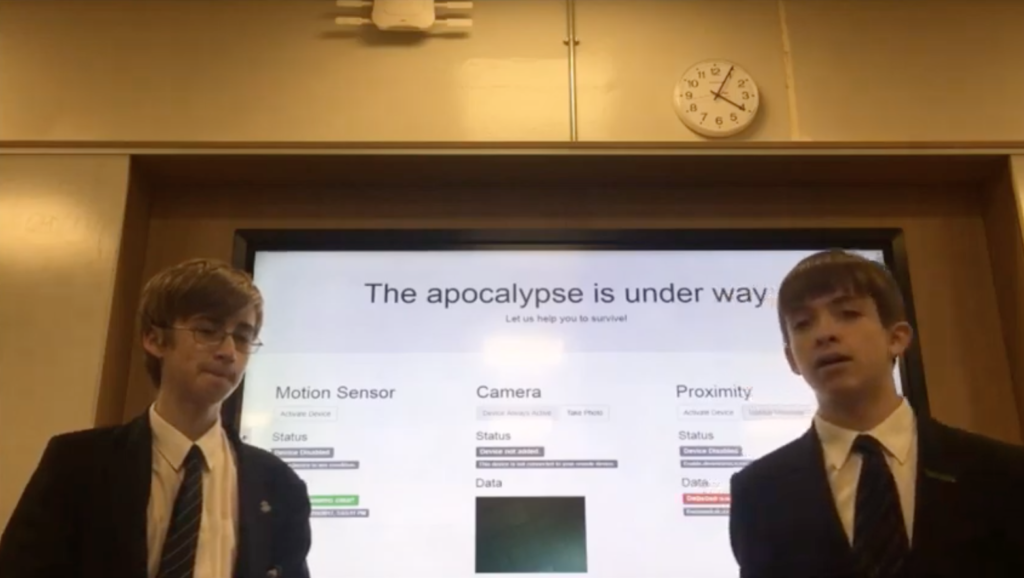Max and Michael, a.k.a. Team Unatecxon, developed a remote security system which makes use of a series of sensors to raise an alarm when intruders are close by.
Both team members have been interested in technology for some time when their teacher offered them the chance to take part in Coolest Projects. They spent around four hours over two weeks putting the project together.
Their teacher had the biggest direct influence by setting up Pioneers, and had also taken them to Coolest Projects when they were invited by the Foundation. Parents supported them by buying the Raspberry Pi kit for Christmas.
The web-based interface was built from scratch with HTML, and learning to communicate with the Raspberry Pi, send instructions, and receive data and photos was a considerable learning process. They had a strong problem-solving approach, and described how they would stand back, try to understand how the problem was happening, what elements it was related to, and then look at how they could adjust those elements.
Read Team Unatecxon’s answers to our Q&A about their project here.
Where did your idea for your Coolest Projects come from?
The original idea from the project came from us entering the final Pioneers competition. We had to come up with a solution using any sort of tech that would help us survive in an apocalypse. We decided that personal security was the best option and we devised a way to protect our base from a variety of attacks – from raiders to zombies.
How long did it take to make your project?
Overall, it was a somewhat rushed project – taking around 6-7 hours to complete over 2 weeks. If we had longer to complete it we could’ve improved the aesthetics of the project, making a case for the security system and adding more functionality.
What were the hardest parts of making the project? What were the best parts?
The hardest part that we experienced was trying to fix the code that didn’t appear to be broken, however simply refused to work. It ended up taking a few hours of debugging of the communication between the website interface and the Raspberry Pi to find out that the school network was simply blocking our access. This coincidentally was the best part of our project. It was the final large bug that we had to iron out before we could begin our full testing. It was a massive relief when we finally.
What did it feel like to present your project at Coolest Projects?
Coolest Projects was a great experience for us. We managed to meet and engage with many members of the public, explaining (sometimes in great detail) the ins and outs of our project. Not only that we got to meet with many other young and older makers and creators, enabling them to become inspired to do their own thing. It was a very enjoyable event where we got to show off our work to many people whom we wouldn’t have connected with otherwise (not to mention having a chance to win a prize!).
What was your favourite part of the Coolest Projects experience? What was the biggest lesson you learnt?
Our favourite part would’ve had to been just the overall experience of travelling down to the event.
We wouldn’t have even been able to travel to London or different parts of the country if we hadn’t taken part in this event. The biggest lesson from this whole experience for us was obvious; teamwork is very important. It would not have been possible for just one of us to create this project on ourselves – we had to not only tap in to each other’s skill sets but rely on each other in order to create our project in the set amount of time.
6. If you could give advice to other young people applying to Coolest Projects what would it be?
Our biggest piece of advice would be for anyone who is thinking about getting in to making and creating project, no matter in what area, is to go for it and be sure to challenge yourself. If you don’t challenge yourself, you become complacent and you limit yourselves. Always try to aim higher but don’t be disappointed when you miss; never give up.
